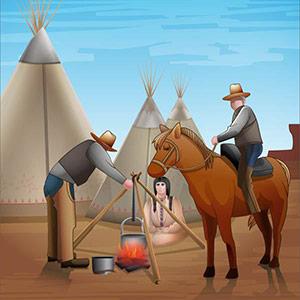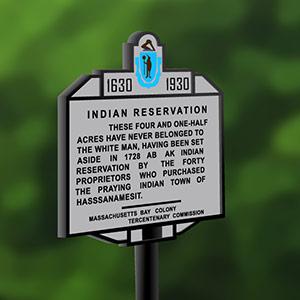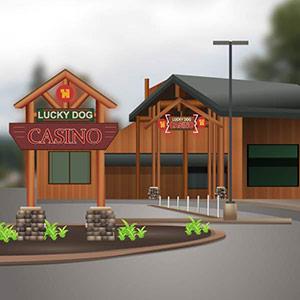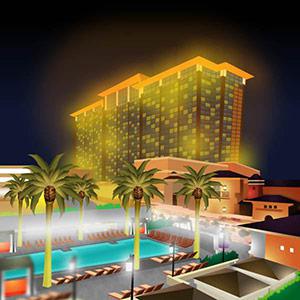At one time, the only way to legally gamble was to take a Vegas road trip or cruise over to Atlantic City to try your luck. In the last few decades, Indian gaming (tribal casinos) have been popping up all over the landscape in almost every U.S. state. But how did the multi-billion dollar gaming industry spread from The Strip to the reservation? Read on to learn about how Indian gaming became legal.
A Brief History of Indian Reservations

In the late 1800s, the remaining Native American tribes were moved (often against their will) to land set aside for them by the federal government. These ‘Indian reservations’ were a form of settlement with the Native American tribes, whereby they would allegedly be ‘left in peace’ to pursue their ways of life. However, as the European way of life decimated Native American ways, these sparse lands were a minor Band-Aid applied to a major wound.
The only way a reservation system would work was for the federal government to organize and establish reservations within the home territories of each tribe. Since federal authority is higher than state authority on national matters and Constitutional rights, all Indian reservations in all 50 states are designated as federal land. And with the land comes certain sovereign rights for the Native American inhabitants. However, for the tribal nations to be truly sovereign, they would need to have the right to self-government, which is clearly not the case. When the rights of individual states, reservations, and federal law clash, the Supreme Court often steps in to settle matters.
Sovereign Tribal Territories

The trouble with any kind of segregation is that it never works, and always creates ghettos and pockets of poverty-stricken people who live outside of society’s advantages. In order to respect the cultural integrity of various tribes, the federal government granted them limited sovereignty on their own reservations. This meant that no state authority could regulate the reservations or otherwise govern them. Since most of the tribal reservations are located in remote lands away from big city economies, tribal poverty increased. Native Americans remain the most impoverished and underprivileged minority community in the United States.
But a loophole in the law changed the destiny of many Native Americans: they are not restricted or bound by state law. That means that if a state bans gambling (as most of them do), they cannot ban gambling on sovereign tribal land, as it technically does not belong to the state. It took a lot of years in the court system for Indian gaming to establish itself, but it all started with one case.
Bryan v. Itasca County

In the 1970s, a married Chippewa Indian couple named Russell and Helen Bryan lived in a mobile home located on an Indian reservation in Minnesota. One day they received a property tax bill from Itasca County. Since they had never received a property tax bill before, they sought legal advice and eventually went to court, refusing to pay the unlawful tax. The Bryans lost their court case in both the state district court and Minnesota Supreme Court. But when they brought their case to the United States Supreme Court, things got interesting.
Under federal authority, the United States Supreme Court decides the most important matters affecting the lives of the people of the United States. Important decisions made on this level have sweeping implications for all involved, and often change previous interpretations of Constitutional law. In the landmark case of Bryan v. Itasca County, Supreme Court Justice Brennan ruled in favor of the Bryans, and in so doing, changed the fate of many tribes forever. The ruling states that not only does a U.S. state have absolutely no rights to impose taxes on individuals living on Indian reservations, they cannot regulate any behavior or decisions made on these reservations either. From that one case, the stage was set for the first tribal casinos.
The Seminole Tribe of Florida
In the 70s, not long after the ground-breaking Bryan case, the Seminole Tribe of Florida set up a high-stakes bingo hall on their reservation land outside of Fort Lauderdale. The local sheriff threatened arrests if the tribe opened the bingo hall. The Seminole Tribe sought—and received—legal protection from the courts. After several district court cases, the Seminoles were allowed to continue their bingo operations based on the ruling in the Bryan case. Soon the Seminoles opened additional bingo halls, and eventually expanded into full-fledged casinos, and ultimately, the ownership of one of the world’s most recognized brands, the Hard Rock Café.
Tribal Casino Expansion

The tribal gaming controversy came to a head when police shut down gambling halls and arrested members of the Cabazon Band of Mission Indians near Indio, California. The tribe sued and won their case, and were allowed to continue their gaming operations. Ongoing clashes between local authorities and various tribes led to Congressional action. In 1988, Congress passed the Indian Gaming Regulatory Act (IGRA), signed by President Ronald Reagan. This furthered the power of tribes to open casino-like halls and expand their gaming activities, in a bid to reduce federal aid to reservations and encourage economic self-sufficiency. The law came with a price, though. The federal government would have ultimate authority over regulating the gaming activities of the tribe.
The IGRA allowed the tribes to keep their sovereignty, but allowed a sort of mixed sovereignty with the federal government when it specifically involves gambling. The biggest reason for this was to allow for the regulation of tribal gaming for economic development, and to protect against negative influences like organized crime. In order for tribal casinos to expand further, various acts and laws have been passed to allow for an increase in gaming activities, from simple bingo halls to full-blown casinos. But the battle for the growth of tribal gaming has been met with much opposition. Individual states have argued against the negative effects of gambling on communities—on and off reservations. Also, the increasing revenues of tribal casinos has started to worry the big boys in Vegas, Atlantic City, and elsewhere. They don’t want the competition.
Blowback
Owners of traditional casinos, most notably former-casino mogul Donald Trump, have loudly stated publicly that tribal casinos are overrun by organized crime. The FBI has refuted these claims, stating that they have seen no evidence of organized crime involvement in tribal gaming. Additional opposition comes in the form of state legal action against different types of casino expansion. As the tribal casinos expanded, the revenue generated allowed tribes to purchase additional land in which to expand. Many states continue to fight over the rights of tribes to buy state land for gambling purposes.
Effects of Indian Gaming on Native American Communities
As of 2011, there were 460 gambling operations run by 240 tribes with a total annual revenue of $27 billion. And this number continues to grow as new tribal casinos open on a regular basis. The amount of tribal land is not distributed evenly, so some states have larger amounts of reservation land upon which to build. Oklahoma has 113 tribal casinos, more than any other state in the U.S. However, there are 562 federally recognized tribes in the United States, many of which have chosen not to run casinos.
Casinos prosper when located near major economic centers, which is why California is home to some of the biggest tribal casinos. The largest casino in the state of California is the Pechanga Resort and Casino in Temecula, with over 3,000 slot machines and 200,000 square feet of gaming space. Of the $27 billion generated by tribal gaming, the largest amounts came from Sacramento, with almost $7 billion, and Washington State with $6.7 billion. The largest casinos in the U.S. (by gaming space, not shopping or entertainment) are owned by Native American tribes. The largest casino in the U.S. is the WinStar World Casino and Resort (519,000 Square feet) in Thackerville, Oklahoma. It is owned by the Chickasaw Nation. The second largest U.S. casino is the 314,000-square-foot Foxwoods Resort Casino, with 7,200 slot machines and 380 table games. Foxwoods is owned by the Mashantucket Pequot Tribe.
Conclusion
As is the case in any big business, most of the Indian gaming wealth is hoarded by those on the top. The effects of Indian gaming on Native American individuals is not immediate, and not always positive. While many of the more profitable tribal casinos provided an increase in jobs and changes in tribal infrastructure (better schools, cultural centers, etc.), that is not the norm in every case. It may take several generations for the economic success of U.S. tribal gaming to be shared with the average Native American—if at all. In the meantime, tribal casinos have become a major force to be reckoned with. Their economic success proves that casinos are a huge business, whether on the dazzling Las Vegas Strip, or on a tribal reservation in Oklahoma.




